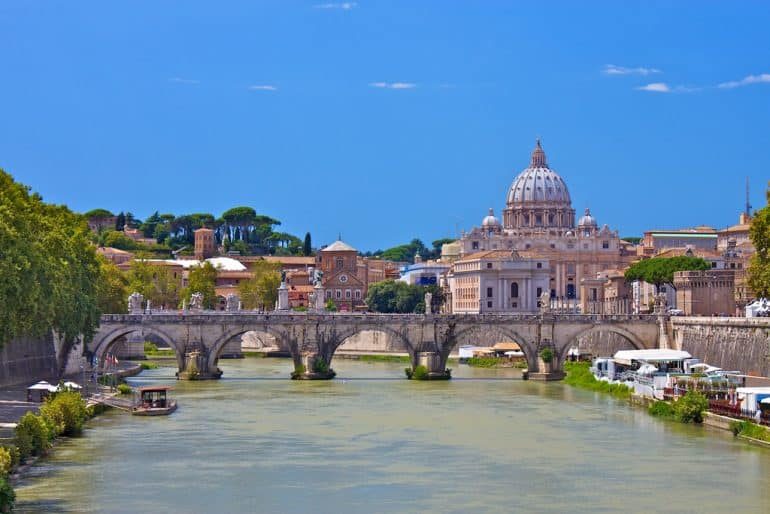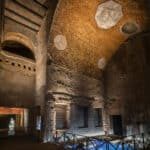What to see in Rome
Rome is coined the “Eternal City” for a reason. It’s because even after all of the wars, the emperors and the fall of the Roman Empire, it continues to stand. It’s the city that will last forever. And with its thousands-years history, it would truly be a shame if you didn’t visit its remarkable monuments. Bellow, you’ll find some of the must-see attractions in Rome!
Colosseum
Address: Piazza del Colosseo, 1 (Colosseum)
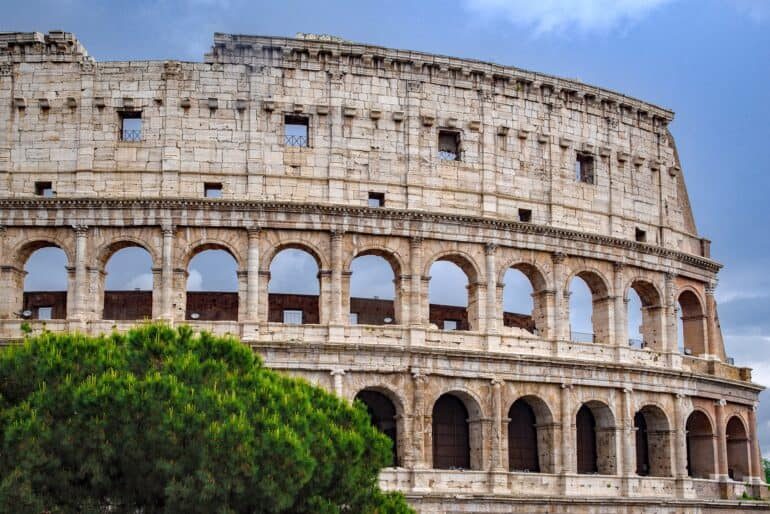
In its prime, the Colosseum was home to several public events from gladiator contests to battle re-enactments, nevertheless, it is accustomed to being full of spectators. When visiting the Colosseum you are given the rare opportunity to step back in time and explore and analyze an ancient Roman ruin that dates back to 70 AD. One of the most spectacular parts of this site is how intact it is which makes the experience even greater.
Roman Forum + Palatine
Address: Via della Salara Vecchia, 5/6 (Colosseum)
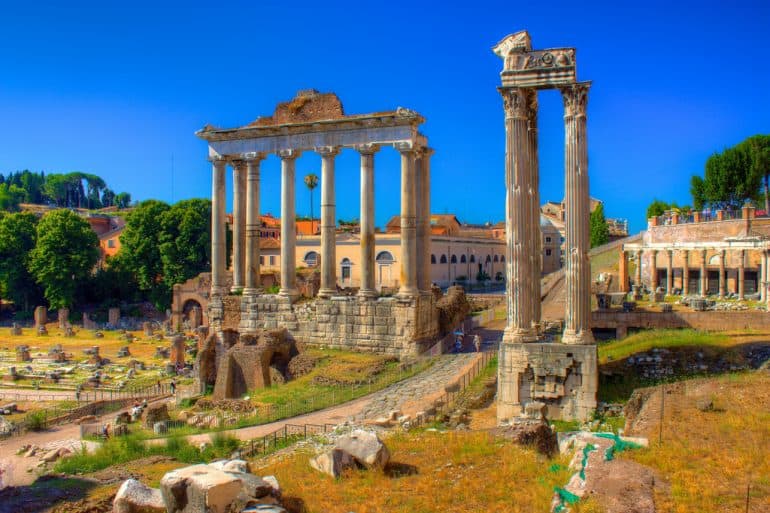
flickr.com/photos/jiuguangw/
Palatine Hill is truly an ancient site in Rome dating back to the 10th Century. If you are a lover of history or just admire seeing how far the world – and Rome – have come from its ancient days this is a must see. It is the centermost hill of the Seven Hills of Rome looking over the Roman Forum. The Forum was once home to some of the most important government buildings, temples, and basilicas in Rome. These, to me, are some of the most enjoyable ruins to visit because you literally get to walk through and analyze it from the ground, which makes the experience even more vivid.
Ara Pacis
Address: Lungotevere dei Mellini, 35 (Centro Storico)
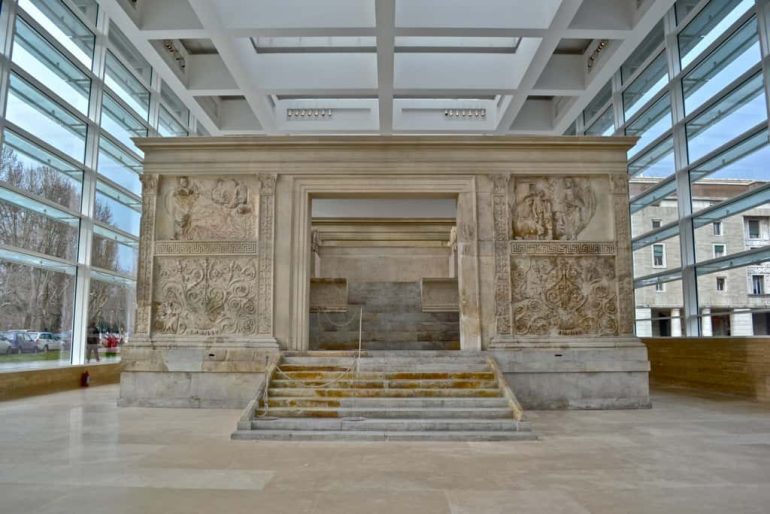
The Ara Pacis is a monument dedicated to the victories of Emperor Augustus in Hispania and Gaul, built between the years of 13 and 9 B.C. It’s initial location was north of Rome along the Tiber river, however, because of the growth of the river, the altar was flooded in silt for over a millennium. In 1938, it was found and brought to its home today, The Museum of Ara Pacis. Luckily, the museum is made of glass, so even if you are just walking by, you’ll still be able to take a look at one of the most important monuments of Ancient Rome.
Campidoglio + Musei Capitolini
Address: Piazza del Campidoglio, 1 (Venezia)
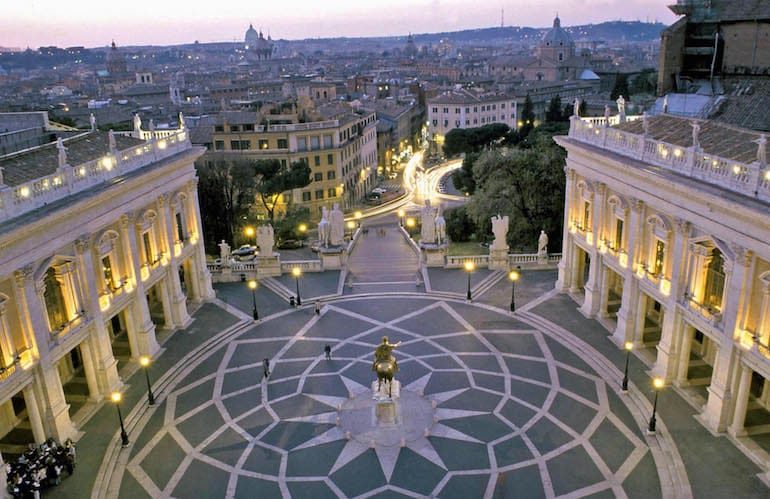
Campidoglio or Capitoline Hill, while the smallest of the seven hills of Ancient Rome, is the most important. At the center of politics and religion in Rome, it solidified itself as the symbol of Rome’s reign as the Capital of the world, or Caput Mundi. The Capitoline Museums is a museum that houses a collection of art and archeological museums located on the top of Capitoline Hill. They are home to a multitude of ancient Roman statues, inscriptions, and other artifacts.
Read the full articleCastel Sant’Angelo
Address: Lungotevere Castello, 50 (Centro Storico)
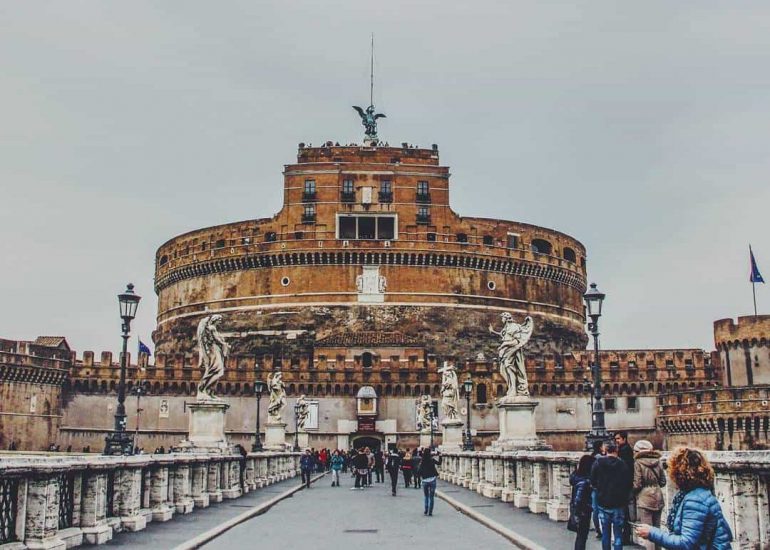
Castel Sant’Angelo, also referred to as Hadrianeum or Sepulcrum Antoninorum, was initially the mausoleum to Emperor Hadrian but later became the burial grounds of the Antonine emperors until Caracalla. Built between the years of 135 and 139 AD, it was later transformed into a fortress and a castle used by the popes in the 5th Century and is now a museum. The circle in the center holds chapels, apartments, a courtyard, and even prison cells. Fun fact, structure in its entirety was once the tallest building in Rome.
Read the full articlePantheon
Address: Piazza della Rotonda (Centro Storico)
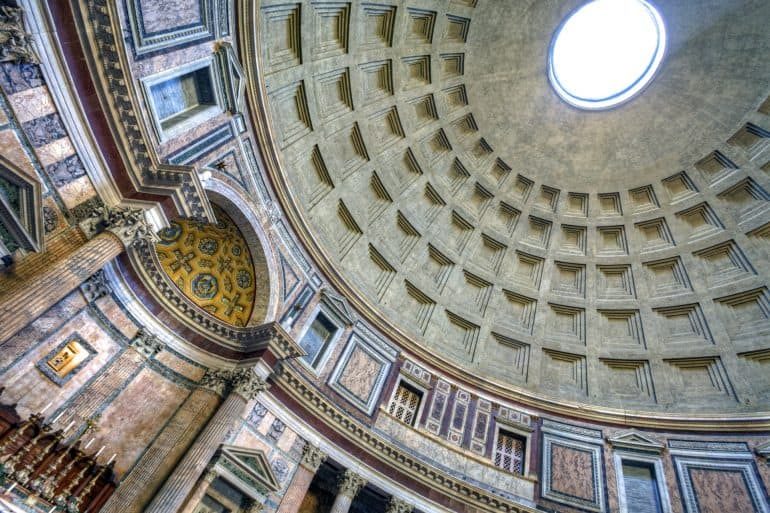
The Pantheon is by far the best-preserved building from Ancient Rome with its completion dating back to 123 AD under the rule of Emperor Hadrian. The actual purpose of the building is still unknown, however it is widely presumed that it was some sort of temple. Although, some believe that it was a public hall designated to public appearances of the emperor, specifically to emphasize and remind watchers of his proclaimed divine status.
Giardino degli Aranci
Address: Piazza Pietro D’Illiria (Aventino)
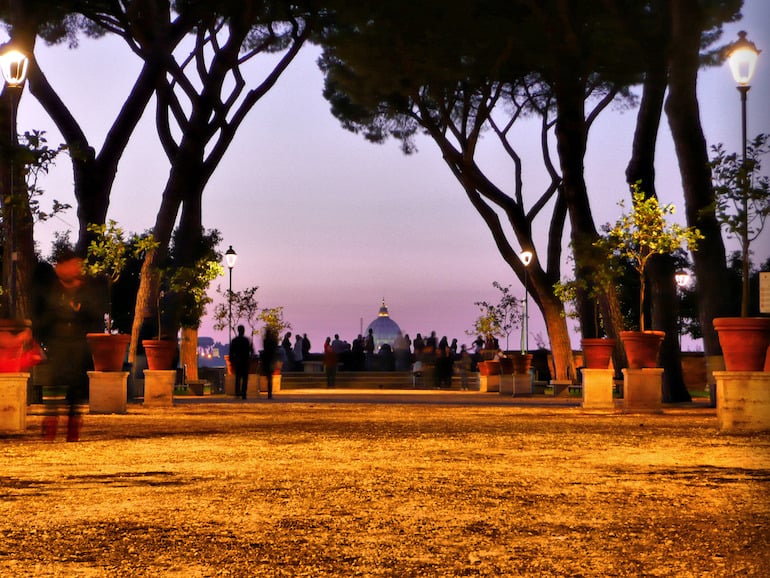
The Orange Garden is located in one of Rome’s most beautiful hills, the Aventine hill, also referred to as Savelli’s Park. The park has been owned by the Savelli family since 1200 and was given its name from the many plants of bitter oranges found on the grounds. The garden also contains remains of a medieval wall dating back to the ancient fortress of the Savelli family. In 1613 everything was demolished, however a few underground barns and warehouses survived. Near the exit of the garden is a gate with a keyhole where you can see one of the most beautiful views of the Dome of St. Peter’s Basilica.
Read the full articlePiazza Navona
Address: Piazza Navona (Centro Storico)
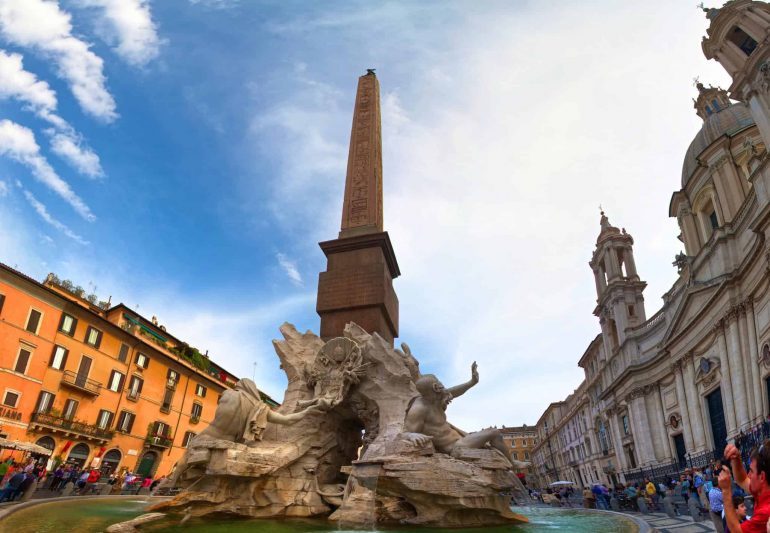
Piazza Navona is built on the site of Stadium of Domitian, home to an array of different athletic events and competitions dating back to 86 AD. In its prime, it could hold about 20,000 people. However, the best part about this square is that it is home to three beautiful fountains designed during the papacy of Gregory XIII. The first is Fontana dei Quattro Fiumi (Fountain of the Four Rivers), found in the center of the Piazza and designed by Bernini in 1651. The second is Fontana del Moro, located in the south of the square and sculpted by Giacomo della Porta and later finished by Bernini. The final fountain is Fontana del Nettuno (Fountain of Neptune), created also by Giacomo della Porta in 1574, and was finally finished by Antonio Della Bitta and Gregorio Zappalà.
Read our full Piazza Navona neighbourhood guidePiazza di Spagna
Address: Piazza di Spagna (Centro Storico)
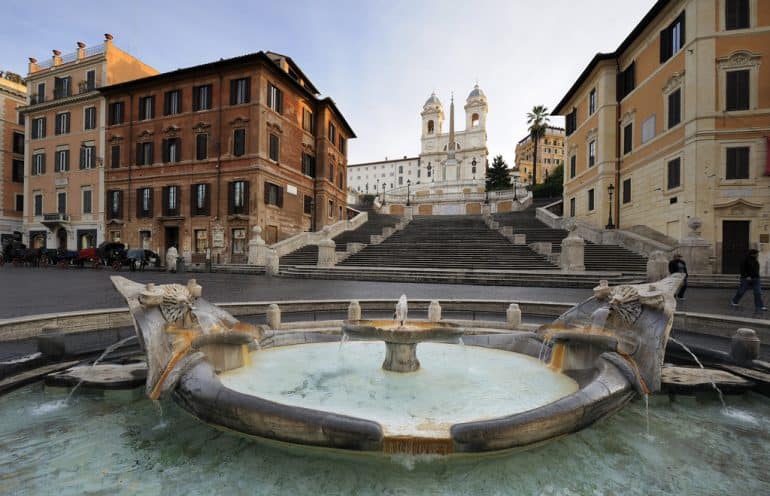
Piazza di Spagna is one of the most well-known squares in Rome. The name derives from the Spanish Embassy to the Vatican being located here. The Piazza is also in one of the most popular Roman neighborhoods, which is also home to some beautiful villas from the seventeenth and eighteenth centuries. To get some of the best views in Rome you can climb the steps from Piazza del Popolo to the top of Pincian Hill or climb up the famous Spanish Steps.
*Make sure you don’t sit on the steps as you could face fines up to €250 (even €400 if you damage the stairs)! Rome has been enforcing stricter rules: after the ban on eating on the Spanish Steps in 2017, they have enforced a sitting ban in 2019 as well.
Villa Borghese
Address: Piazzale Napoleone I (Villa Borghese)
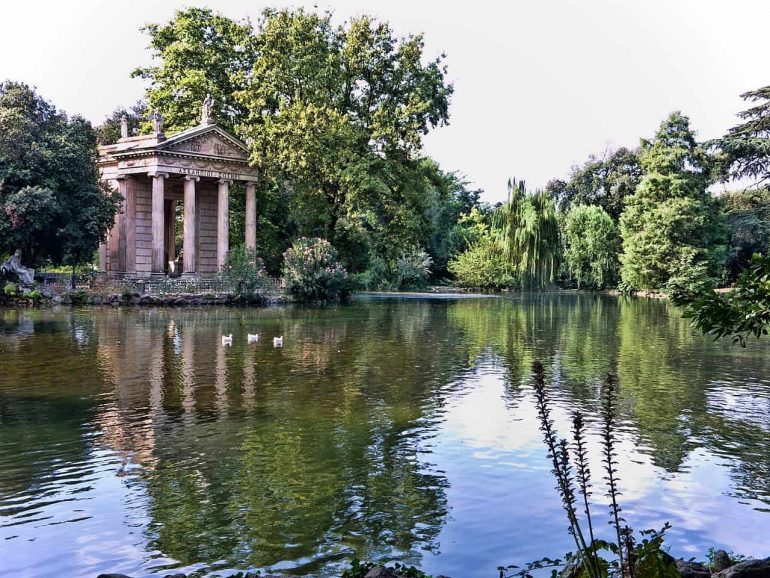
This beautiful garden is home to a multitude of buildings, museums, such as the Galleria Borghese, and other attractions like row boats and pedal cars. After Villa Doria Pamphili and Villa Ada, Villa Borghese is the third largest park in Rome. The garden was built for the Borghese villa on Pincian Hill by Flaminio Ponzio and imagined by Scipione Borghese. However, the garden was redone in the nineteenth century which is what we see today.
Galleria Borghese
Address: Piazzale Scipione Borghese, 5 (Villa Borghese)
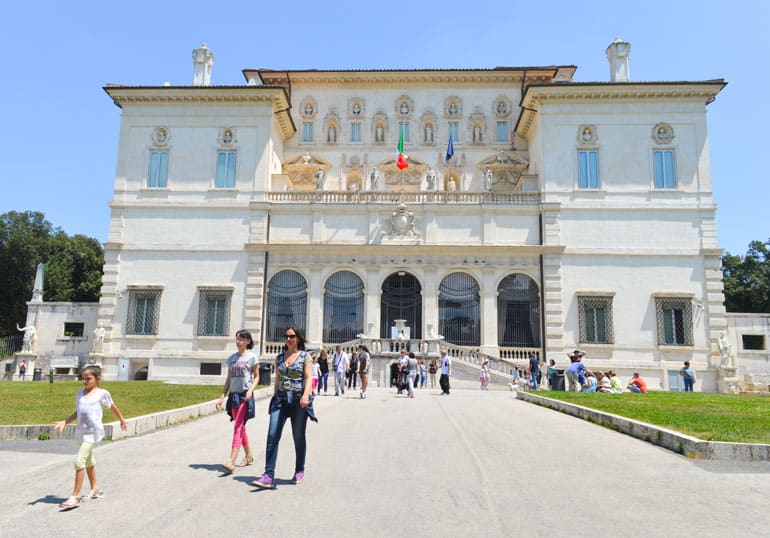
www.flickr.com/photos/fran001/27206820160/
Galleria Borghese is an art gallery located in what used to be Villa Borghese Pinciana. This gallery is home to a large portion of the Borghese collection of sculptures, paintings, and other antique valuables. The collection was created by Cardinal Scipione Borghese, the nephew of Pope Paul V. Some of the most renowned works in this collection are: Boy with a Basket of Fruit, St Jerome Writing, Sick Bacchus, Titian’s Sacred and Profane Love, Raphael’s Entombment of Christ and others.
Trevi Fountain
Address: Piazza di Trevi (Centro Storico)
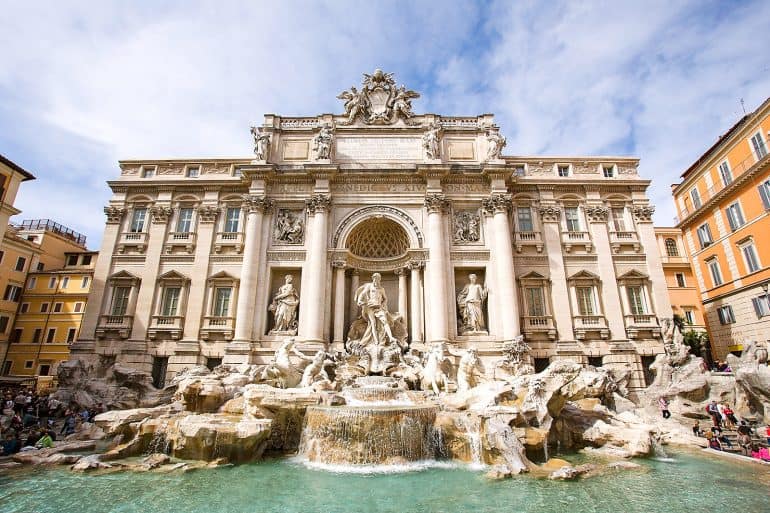
flickr.com/photos/atibordee
The Trevi Fountain is by far one of the most popular fountains in the world and the largest Baroque fountain in all of Rome, designed by Nicola Salvi and completed by Pietro Bracci. As many know, legend says that when you throw a coin into the Trevi fountain, with your back facing it and throwing the coin with your right hand over your left shoulder, then you are guaranteed to return to Rome. Thanks to some restorations in 2014, the Trevi Fountain is just as magnificent, if not more, at night due the addition of 100+ LED lights.
San Pietro
Address: Piazza San Pietro (Vatican City)
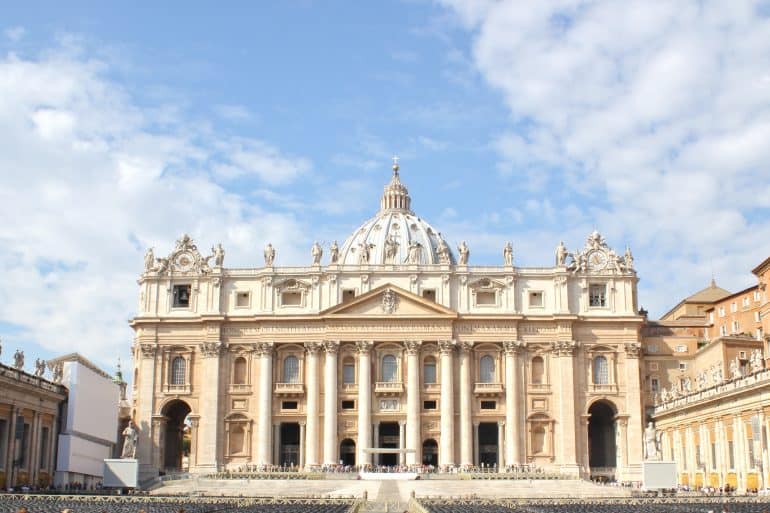
St. Peter’s Square is a large square located right in front of St. Peter’s Basilica in Vatican City, named after the apostle of Jesus and the first Catholic Pope. Saint Peter’s Basilica is deemed one of the holiest and most important pilgrimage site in the Catholic Church. Along with that, it is also one of the largest churches in the world, home to several liturgies of the Pope. Inside you will find several works of art: St. Peter’s Baldachin, the Pietà, and St.Peter on his throne.
Vatican Museums
Address: Viale Vaticano (Vatican City)
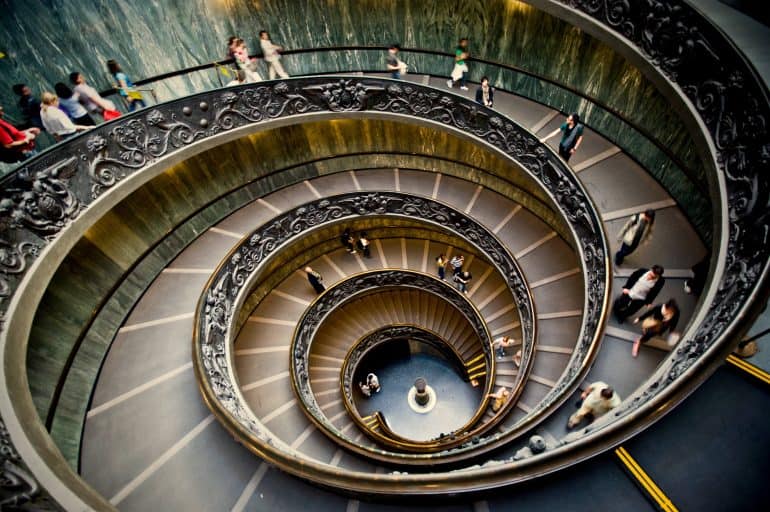
The Vatican museums are home to some of the most globally acclaimed masterpieces of sculptures, paintings, frescos, and other art pieces that have been collected by popes over the centuries. Some of the most well-known and exceptional works are the Sistine Chapel, the Chapel of Beato Angelico, the Raphael Rooms, the Borgia Apartments, and Loggia. However, there are so much more breathtaking works to behold when walking throughout the entirety of the Vatican.
Read the full articleMonument of Victor Emanuel II (Vittoriano)
Address: Piazza Venezia (Venezia)
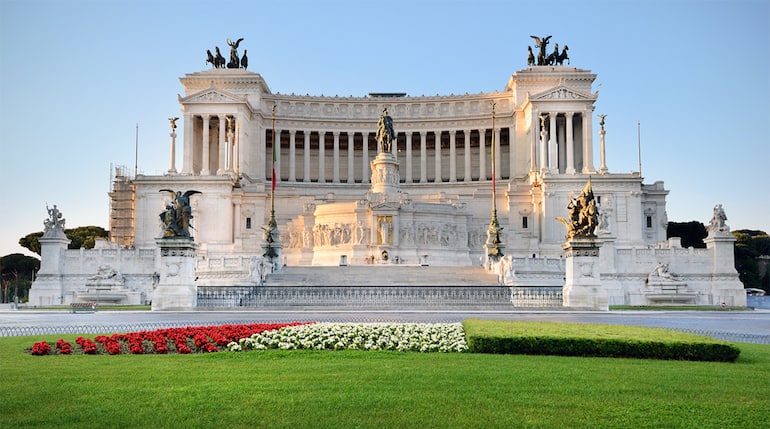
The Monument of Victor Emmanuel II (Vittoriano) is located in Piazza Venezia. On the top you are able to get one of the best views of Rome. Inside is the Institute for the History of the Italian Risorgimento and the Central Museum of the Risorgimento. The monument is also the burial site of the unknown soldier, here you will find the eternal flame burning and 24/7 guards. The Monument as a whole is one of the most breathtaking and eye-catching buildings in all of Rome and is photographed thousands of times a day.
Santa Maria Maggiore
Address: Piazza di S. Maria Maggiore, 42 (Esquilino)
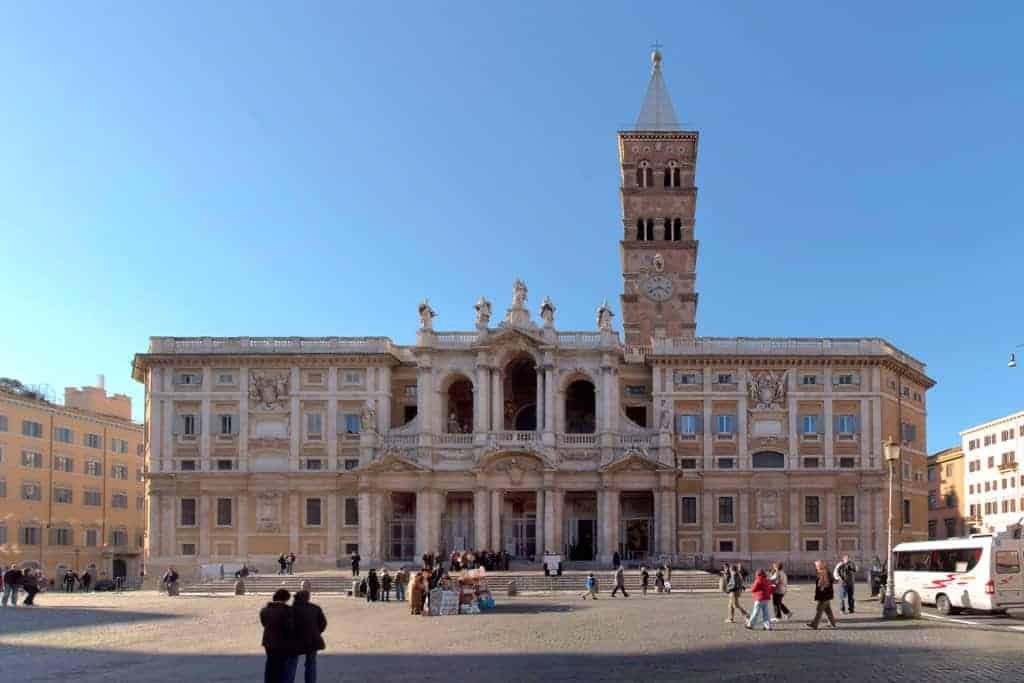
The ancient Catholic Basilica of Santa Maria Maggiore is believed to be one of the largest churches in Rome in honor of the Virgin Mary. It is also one of the four major basilicas in Rome. Originally the grounds were a pagan temple for the goddess Cybele. Legend has it that the Virgin Mary appeared to Pope Liberius during the fourth century and told him how to build the church. Some of the different names the basilica has gone by are: Saint Mary of the Snow, Santa Maria Liberiana, St. Mary of the Nativity.
Palazzo Valentini – Domus Romane
Address: Foro Traiano, 85 (Venezia)
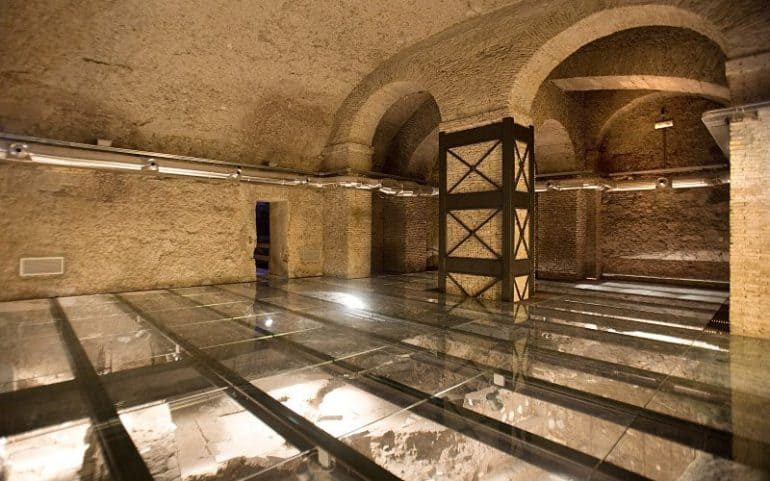
Located beneath Palazzo Valentini, you will find a virtual reconstruction of the patrician “Domus” of imperial age. With the addition of lights, sound effects, and projections of walls, rooms, peristyle, decorations, kitchens, furniture, etc. you will really feel like like you were there. The Domus had belonged to a really powerful family of the time, however the family and their success is unknown.
Campo de’ Fiori
Address: Piazza Campo de’ Fiori (Centro Storico)

Campo de’ Fiori or Field of Flowers is one of the most popular squares in Rome. Whether it is night or day, the square is booming with people. In the center of the piazza is a statue in honor of Giordano Bruno, an Italian philosopher who was burned at the stake for heresy in 1600. During the day you can find a farmers’ market with different fruits, vegetables, and flowers and an array of lively bars, restaurants, and terraces full of people at night.
Read our full Campo de’ Fiori neighbourhood guideCatacombs & Underground Rome
Address: Various
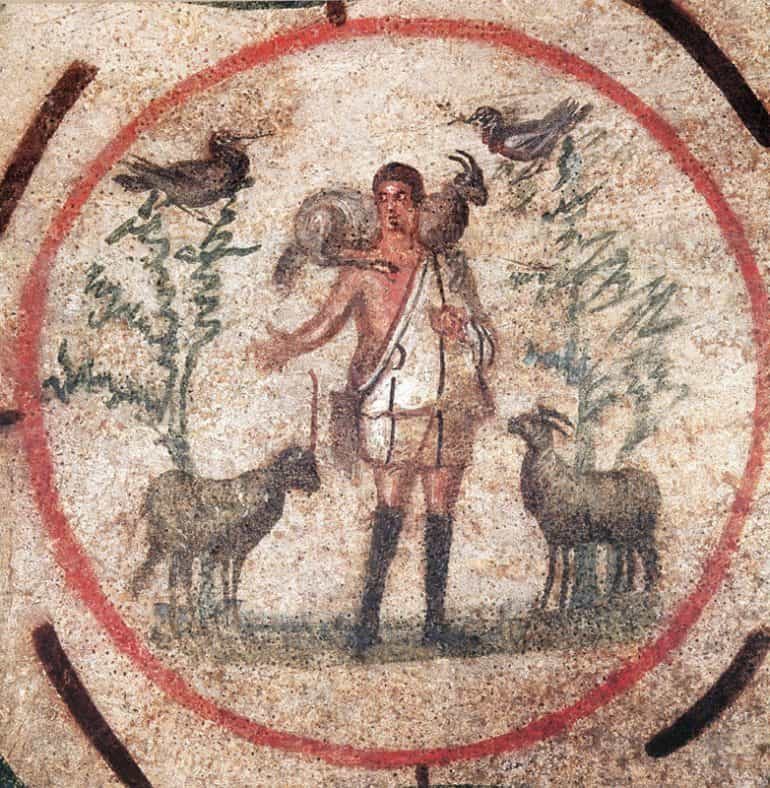
Underneath Rome is a part of the city just as ancient as all the treasures above ground. Beneath the soil you will find plethora of things from animals, water, and remains. Rome is known for its popular catacombs and crypts that are cemeteries to thousands of remains, whether that be of monks or saints. When exploring underground Rome, you will find baths, villas, and even temples. There are many sites to visit throughout Rome so try your best to see them all!
Read the full articleBaths of Caracalla
Address: Viale delle Terme di Caracalla (Aventino)
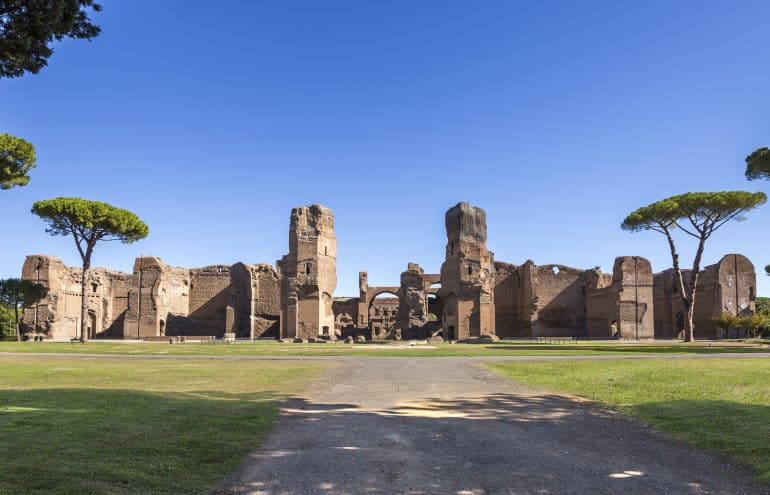
Emperor Caracalla’s bathhouse is one of the most breathtaking ruins in Rome. In its prime it was home o baths, gyms, libraries, shops, and gardens and held upwards of 5000 people a day. Most of the ruins are of the main bathhouse. They were still operational up until 537 AD when Rome’s water supply was shut off by the Visigoths. In the 16th and 17th centuries many important sculptures were found during excavation, some of which are now a part of the Farnese family art collection. The site today is also home to some amazing operas and ballets over the summer.
Read the full article

